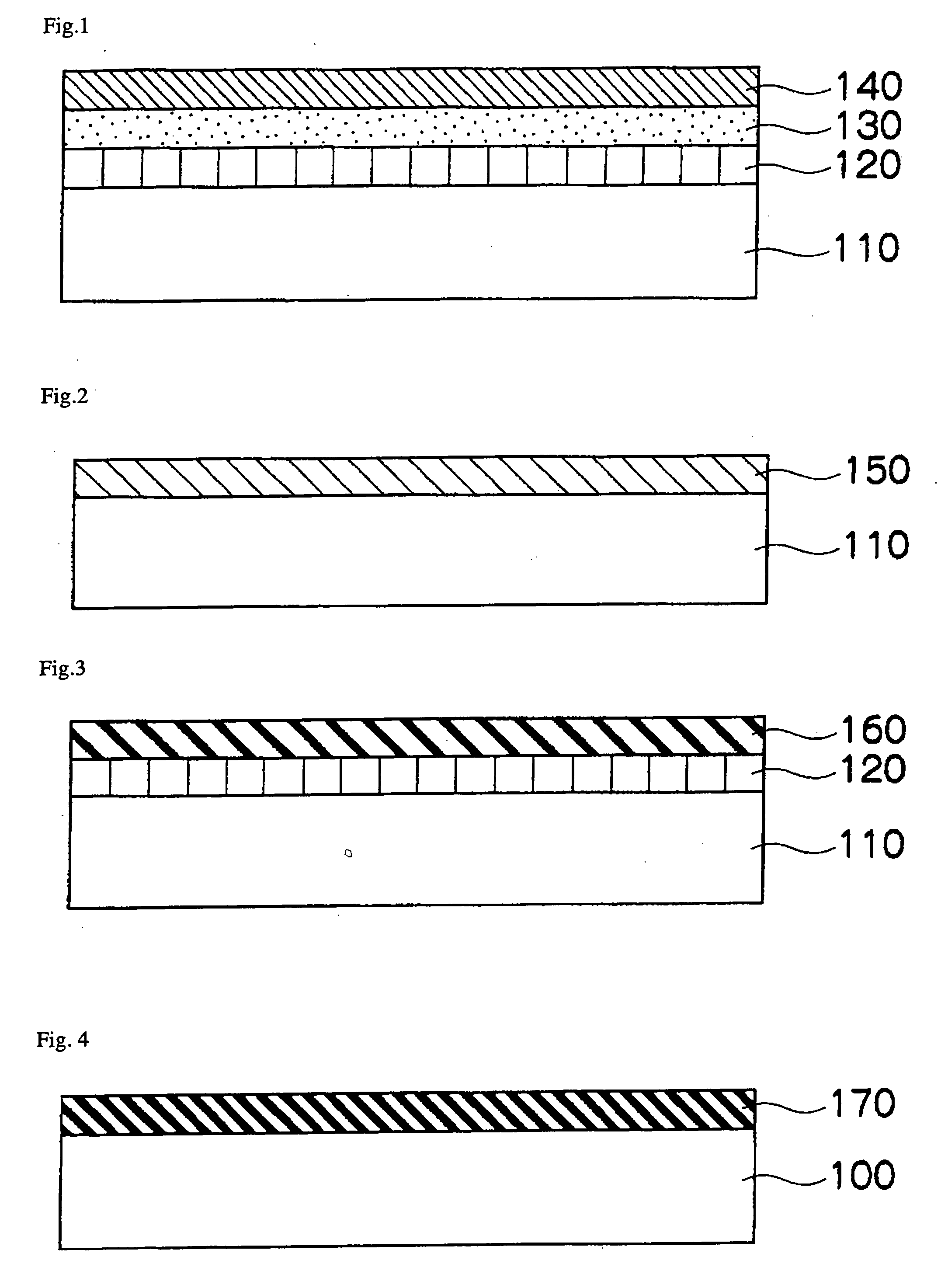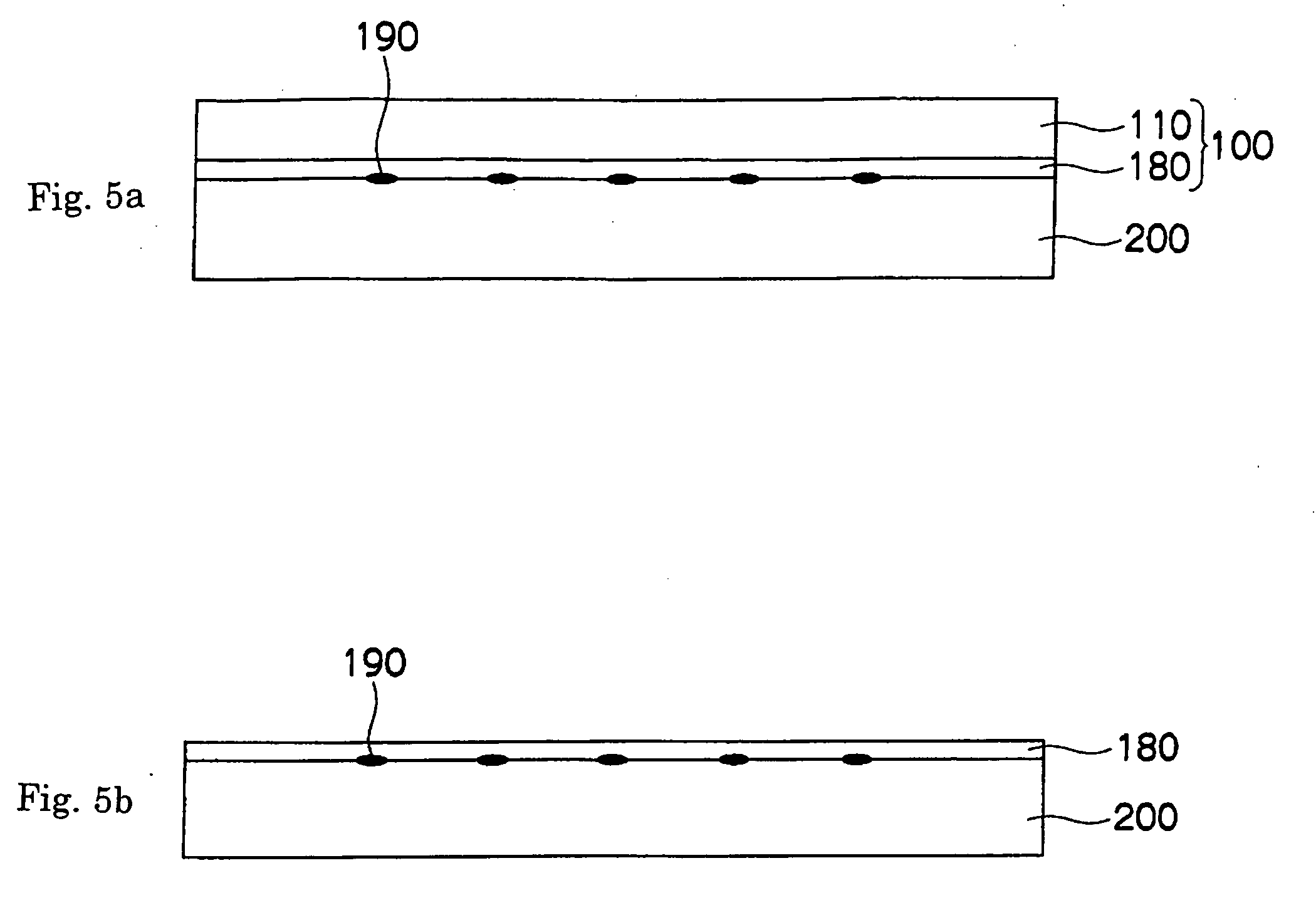Image transfer sheet for electrophotography, method for manufacturing image recorded medium using the same, and image recorded medium
- Summary
- Abstract
- Description
- Claims
- Application Information
AI Technical Summary
Benefits of technology
Problems solved by technology
Method used
Image
Examples
example 1
[0370] A transfer sheet for electrophotography (transfer sheet 1) is manufactured as follows. Hereinafter, the manufacturing method will be described for each process.
(Preparation of curable Resin Layer Coating Liquid 1)
[0371] 20 parts of a silicone hardcoat agent containing an organic silane condensation product, melamine resin, and alkyd resin (manufactured by GE Toshiba Silicone; SHC900, solid content 30% by weight) is added to 30 parts of a solution obtained by mixing cyclohexanone and methyl ethyl ketone in a weight ratio of 10 to 90, and the mixture is thoroughly stirred to prepare a curable resin layer coating liquid 1.
(Preparation of Image Receiving Layer Coating Liquid 1)
[0372] 30 parts of a polyester resin (manufactured by TOYOBO Co., Ltd.; VYLON 200), 1 part of cross-linked acrylic particles (manufactured by Soken Chemical & Engineering Co., Ltd.; MX-100, volume average particle diameter 10 μm), and 0.6 part of a charge control agent (manufactured by NOF CORPORATION...
example 2
(Preparation of Image Receiving Layer Coating Liquid 2)
[0391] 20 parts of an acrylic urethane resin (manufactured by Soken Chemical & Engineering Co., Ltd.; FORET 4M, solid content 30% by weight), 0.1 part of cross-linked acrylic particles (manufactured by Soken Chemical & Engineering Co., Ltd.; MX-800, volume average particle diameter 8 μm), and 2.5 parts of a charge control agent (manufactured by NOF CORPORATION; ELEGAN 264 WAX) are added to 30 parts of a solution obtained by mixing cyclohexanone and methyl ethyl ketone in a weight ratio of 10 to 90. The mixture is thoroughly stirred to prepare an image receiving layer coating liquid 2.
(Manufacture of Transfer Sheet (Transfer Sheet 2) for Electrophotography)
[0392] A sheet is provided in the same manner as in Example 1 which has the resistance adjusting layer on its back surface and the releasing layer on the other surface. A resistance adjusting layer is formed on an un-treated face of a PET film (PET 100SG-2, thichness: 101 ...
example 3
(Preparation of Image Receiving Layer Coating Liquid 3)
[0397] 40 parts of a urethane modified polyester resin (manufactured by TOYOBO Co., Ltd.;UR-4122, solid content 30% by weight), 0.6 part of cross-linked acrylic particles (manufactured by Soken Chemical & Engineering Co., Ltd.; MX-3000, volume average particle diameter 30 μm), and 0.8 part of a charge control agent (manufactured by NOF CORPORATION; ELEGAN 264 WAX) are added to 30 parts of a solution obtained by mixing cyclohexanone and methyl ethyl ketone in a weight ratio of 10 to 90. The mixture is thoroughly stirred to prepare an image receiving layer coating liquid 3.
(Manufacture of Transfer Sheet (transfer Sheet 3) for Electrophotography)
[0398] A sheet is provided in the same manner as in Example 1 which has the resistance adjusting layer on its back surface and the releasing layer on the other surface. A 0.2 μm-thick resistance adjusting layer is formed on an un-treated surface of a PET film (PET 100SG-2, thichness: 1...
PUM
| Property | Measurement | Unit |
|---|---|---|
| Temperature | aaaaa | aaaaa |
| Electrical resistance | aaaaa | aaaaa |
| Electrical resistance | aaaaa | aaaaa |
Abstract
Description
Claims
Application Information
 Login to View More
Login to View More - R&D
- Intellectual Property
- Life Sciences
- Materials
- Tech Scout
- Unparalleled Data Quality
- Higher Quality Content
- 60% Fewer Hallucinations
Browse by: Latest US Patents, China's latest patents, Technical Efficacy Thesaurus, Application Domain, Technology Topic, Popular Technical Reports.
© 2025 PatSnap. All rights reserved.Legal|Privacy policy|Modern Slavery Act Transparency Statement|Sitemap|About US| Contact US: help@patsnap.com



